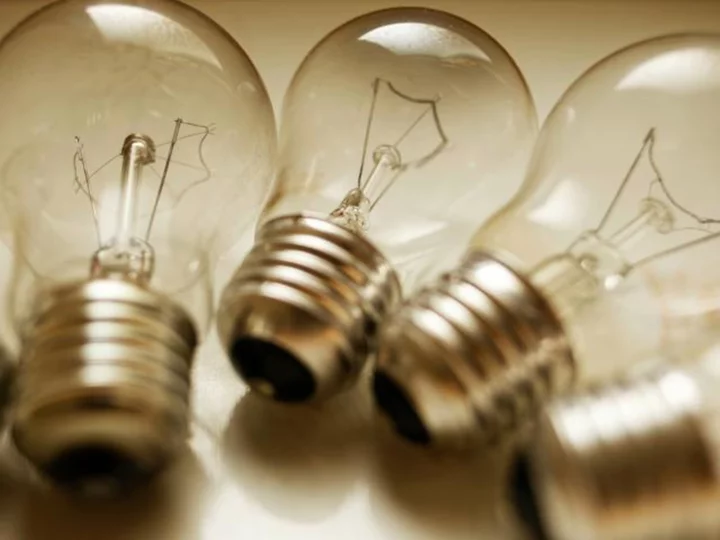America's ban on incandescent light bulbs, 16 years in the making, is finally a reality. Well, mostly.
A rule issued in 2007, rolled back by the Trump administration, and updated last year by the Biden administration, effectively bans the sale of common incandescent light bulbs. The rule went fully into effect Tuesday.
Here's what you need to know.
What is banned?
The rule passed by President Joe Biden's Department of Energy in April 2022 states that light bulbs must emit a minimum of 45 lumens per watt. A lumen is a measure of brightness.
That effectively outlaws the manufacture and sale of common incandescent bulbs, the kind you screw into the vast majority of light sockets in your home. That's because traditional incandescent bulbs provide just 15 lumens per watt, according to light bulb manufacturer Philips.
By contrast, most LED bulbs will get you 75 lumens per watt, or more.
What is not banned?
Not all incandescent light bulbs are banned as part of the new rule, according to the Department of Energy. Here's what manufacturers can still build and stores can continue selling:
Appliance lamps, including fridge and oven lightsBlack lightsBug lampsColored lampsInfrared lampsLeft-handed thread lampsPlant lightsFlood lightsReflector lampsShowcase lampsTraffic signalsSome other specialty lights, including marine lamps and some odd-sized bulbs
Why is the government banning the bulbs?
New technology, including LED lights, provides a much more energy-efficient manner to light your home.
The Department of Energy estimates the rules will save US consumers close to $3 billion on their utility bills, and project it will also cut planet-warming carbon emissions by 222 million metric tons over the next 30 years.
Do I have to throw out my old bulbs?
You can continue to use whatever light bulbs you like, as long as they still work (incandescents have a much shorter life span than LEDs, on average, according to the Energy Department).
The ban is only on the manufacture and sale of light bulbs that produce fewer than 45 lumens per watt -- not the usage of non-conforming bulbs.
Still, nearly half of US households use LED bulbs for most or all indoor lighting, according to the 2020 Residential Energy Consumption Survey conducted by the US Energy Information Administration. So many Americans have moved on from incandescent bulbs, anyway.
Why is this controversial?
The ban caps off a decades-long bipartisan effort to ban incandescent bulbs that started in the Bush administration. But the rule has faced somewhat of a backlash, particularly on conservative media channels and among some Republican politicians.
Former President Donald Trump's administration in 2019 undid a previous Obama-era expansion of the 2007 light bulb rule, although the Biden administration later reinstated it. Trump once famously complained about the quality of the light coming from LED bulbs, telling House Republicans "I always look orange" in the energy-efficient lighting.
What's next?
Next on the banned list: compact fluorescent light bulbs.
In December 2022, the Department of Energy proposed a rule that would more than double the current minimum light bulb efficiency level, to over 120 lumens per watt for the most common bulbs. That would go into effect by the end of 2024 and effectively ban CFL bulbs.
-- CNN's Ella Nilsen contributed to this report

